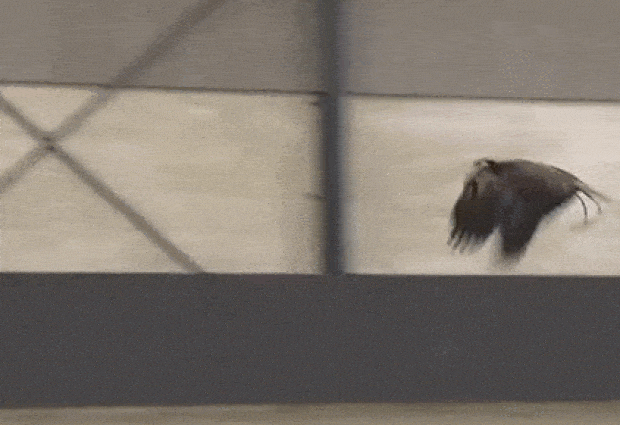
Despite the number of regulations in place, the only deterrence preventing rogue drone operators from breaking the law is the fear of getting caught. For this reason, law enforcement agencies from around the world have taken the liberty to develop their own modes of apprehension, using everything from their own net-firing drones to radio jamming signals. These approaches may successfully disable the drone, but they exhibit one major design flaw—namely—that a free-falling drone creates an equally precarious situation.
Striving to meet both marks, the Dutch National Police are taking a unique approach that ditches electronics altogether, instead, relying on trained eagles to hunt down and snatch drones midair. Once the raptor captures the drone, it treats the drone as prey, instinctively carrying it off to a safe location where it’ll attempt to eat the drone, before the handlers can reward it with a treat.
According to its video above, the agency explains (in Dutch) that the eagles are meant to only be deployed in emergency situations such as if a drone is preventing an air ambulance from landing. So no, you won’t run the risk of having your $4,000 professional DJI Spreading Wings S1000+ spontaneously attacked by a bird of prey.
The goal is determine whether raptors’ natural characteristics enable them to act as adaptive anti-drone interceptors and whether or not the approach is a practical solution; while the eagle has little issue overpowering a DJI Phantom 3 or any similarly-sized drone, its talons or legs may sustain injury when attempting to seize larger drones.
Guard From Above, the firm training the birds, mentions that even if birds of prey have scales protecting their feet from their victim’s retaliatory bites, it is investigating the possibility of adding protective articles to the birds’ claws. Also, the Dutch National Police has commissioned the Dutch Organization for Applied Scientific Research (TNO) to study the impact the drone’s chassis on the eagle’s talons.
As cool as witnessing an eagle take out a drone may be, such an arrangement will in all likelihood never pass in the United States, where most birds of prey are protected species.
Source: IEEE Spectrum
Advertisement
Learn more about Electronic Products Magazine





